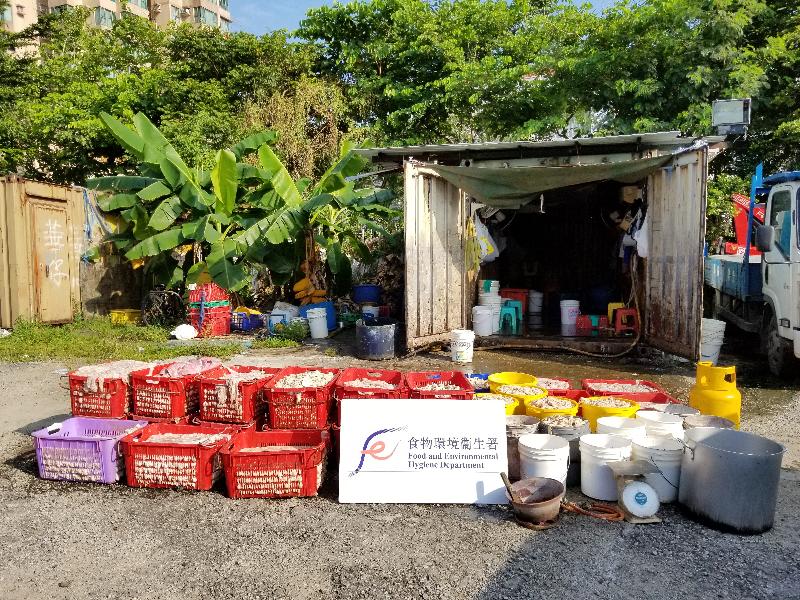Hong Kong’s Gross National Income and external primary income flows for second quarter of 2018
The Census and Statistics Department (C&SD) released today (September 14) the preliminary statistics on Hong Kong's Gross National Income (GNI) and external primary income flows (EPIF) for the second quarter of 2018.
Hong Kong's GNI in the second quarter of 2018 increased by 8.1% over a year earlier to $733.6 billion at current market prices. The Gross Domestic Product (GDP), preliminarily estimated at $677.0 billion at current market prices in the same quarter, recorded a 7.7% increase over the same period. Measured at current market prices, the value of GNI was larger than GDP by $56.6 billion in the second quarter of 2018, representing a net external primary income inflow of the same amount, and equivalent to 8.4% of GDP in that quarter.
After netting out the effect of price changes over the same period, Hong Kong's GNI increased by 4.2% in real terms in the second quarter of 2018 over a year earlier. The corresponding GDP in the same quarter increased by 3.5% in real terms.
Total primary income inflow into Hong Kong, estimated at $459.3 billion in the second quarter of 2018 and equivalent to 67.8% of GDP in that quarter, increased by 17.3% over a year earlier. Meanwhile, total primary income outflow, estimated at $402.7 billion in the second quarter of 2018 and equivalent to 59.5% of GDP in that quarter, increased by 18.1% over a year earlier. Taking the inflow and outflow together, a net external primary income inflow of $56.6 billion was recorded in the second quarter of 2018.
As for the major components of total primary income inflow, direct investment income (DII) increased by 14.8% over a year earlier, mainly due to the increase in earnings of some prominent local enterprises from their direct investment abroad. Portfolio investment income (PII) increased by 10.5% over a year earlier, mainly attributable to the increase in dividend income received by resident investors from their holdings of non-resident equity securities and the increase in interest income received by resident investors from their holdings of non-resident long-term debt securities. Other investment income (OII) increased by 63.3%, largely caused by the increase in interest income from external assets of the local banking sector. Income on reserve assets increased by 46.2%, as a result of the increase in investment earnings from foreign currency reserves.
Regarding the major components of total primary income outflow, DII increased by 13.0% over a year earlier, mainly due to the increase in earnings of some prominent multinational enterprises from their direct investment in Hong Kong. PII increased by 23.3%, mainly attributable to the increase in dividend payout to non-resident investors from their holdings of resident equity securities. OII increased by 69.2%, largely caused by the increase in the interest rates.
Analysed by country/territory, the mainland of China continued to be the largest source of Hong Kong's total external primary income inflow in the second quarter of 2018, accounting for 36.1%. This was followed by the British Virgin Islands (BVI), with a share of 19.3%. Regarding total external primary income outflow, the mainland of China and the BVI remained the most important destinations in the second quarter of 2018, accounting for 23.9% and 23.5% respectively.
Further Information
GDP and GNI are closely related indicators for measuring economic performance. GDP is a measure of the total value of production of all resident producing units of an economy. GNI denotes the total income earned by residents of an economy from engaging in various economic activities, irrespective of whether the economic activities are carried out within the economic territory of the economy or outside. In other words, GNI is obtained by adding to GDP the primary income earned by residents from outside the economic territory and deducting primary income earned by non-residents from within the economic territory. Primary income comprises investment income and compensation of employees.
Figures of EPIF presented above are compiled based on data obtained from the Survey of External Claims, Liabilities and Income conducted quarterly by the C&SD, supplemented by data from other sources.
Figures of GNI and EPIF analysed by income component from the third quarter of 2016 to the second quarter of 2018 are presented in Table A, while selected major country/territory breakdowns of external primary income inflow and external primary income outflow for the same quarters are presented in Tables B(1) and B(2) respectively.
Statistics on GDP and GNI from 2016 onwards and EPIF from 2017 onwards are subject to revision when more data become available.
Enquiries about GNI and EPIF statistics may be directed to the Balance of Payments Branch (2) of the C&SD at 3903 7017.
